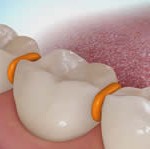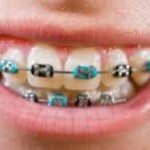Do Braces Hurt???
March 15th, 2016
One of the more frequently asked questions at the initial consultation is whether or not braces will hurt. Although every patient is different and has a different threshold for pain, there are some general guidelines as to what can be expected when it comes to braces and discomfort…
At your first appointment, (the ‘records’ appointment) an impression (mold) of your teeth will be taken. The impression is easy and painless. ‘Separating elastics’ will be placed at this appointment as well. The seperators create room between your molars for the metal bands to be placed at the following appointment. You may feel some pressure when the seperators are placed, but it is usually not painful until a few hours later when the teeth start to move.

At the next appointment the braces will be put on. The process of getting the braces put on is relatively painless. Although, the retractors used to hold back your cheeks are not the most comfortable things. The first step is to get the brackets glued to the teeth. Then, the wire is placed and ligature elastics are added to hold everything together. You may feel pressure after the braces are put on, but it really isn’t painful until a few hours later.
Three to four hours after the braces are put on you will start to feel uncomfortable. Braces work by creating inflammation around the roots of the teeth. The force placed on the tooth cuts off the blood flow to one side of the tooth creating a buildup of lactic acid (the same thing that creates a ‘Charlie horse’ or makes your muscles sore after exercise.) Over the next one to two days your body will dissolve the bone in the area where there is pressure which causes the tooth to move. Depending upon how much force was placed on the tooth the process may repeat itself. Once the force is used up the tooth will relax into the new position and any discomfort will subside. You can expect this process to occur every time your braces are tightened (about every five weeks).

As I mentioned, everyone’s pain tolerance is different. Some patients say they hardly feel a thing while others report severe pain (although this is uncommon). Over-the-counter pain relievers such as Advil and Tylenol can usually help through the first couple of days.
